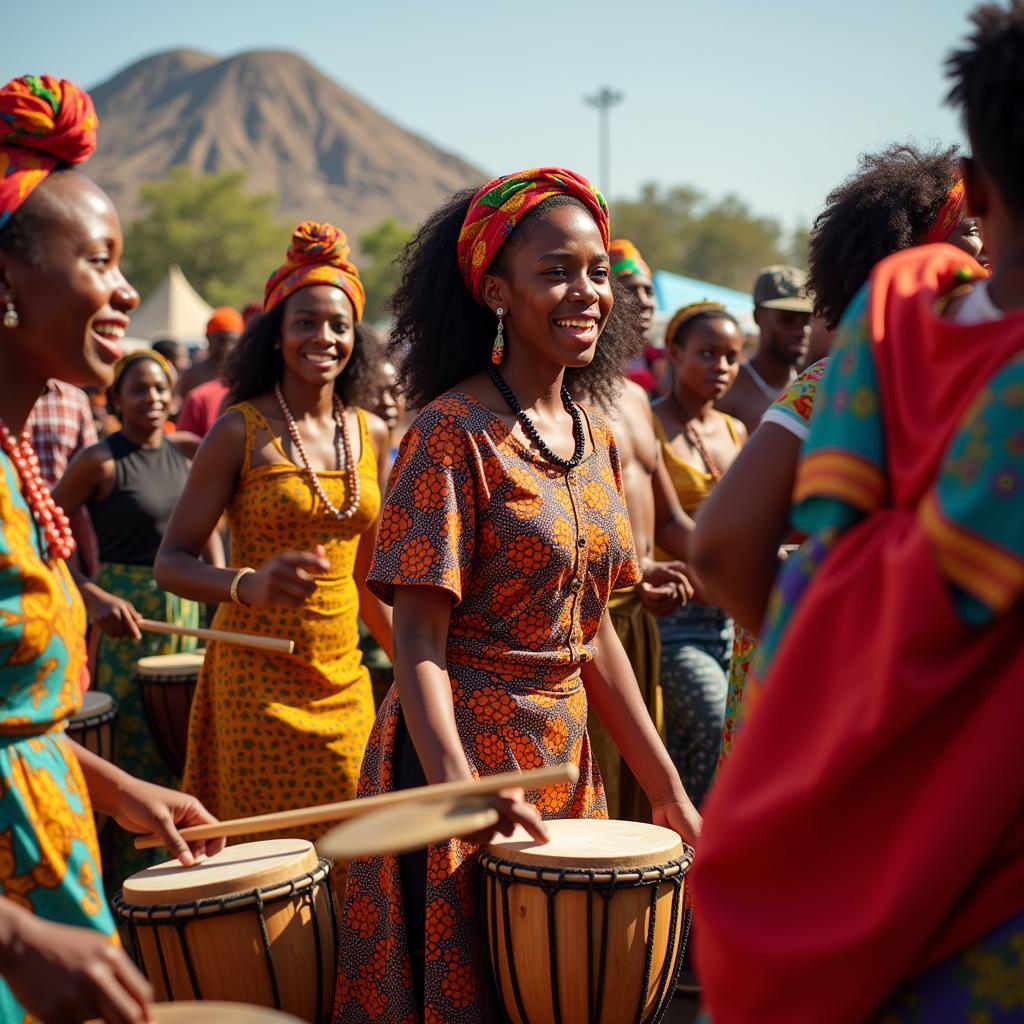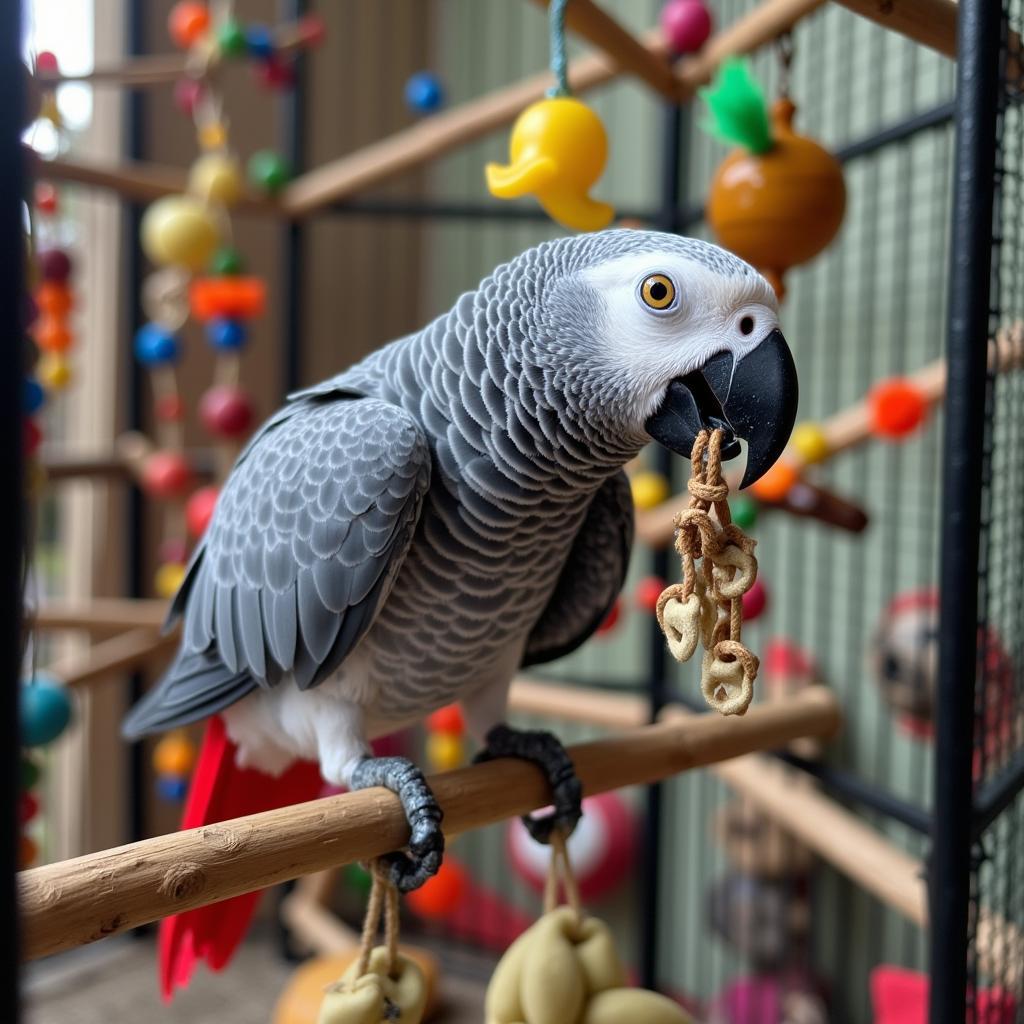African Carrying Baby on Back: A Timeless Tradition of Love and Practicality
The sight of an African woman carrying her baby on her back, swathed in colorful fabric, is a familiar one across the continent. This age-old practice, often referred to as “babywearing,” is far more than a mere mode of transport. It’s a deeply ingrained cultural tradition in Africa, reflecting a beautiful blend of practicality, love, and a deep-rooted sense of community.
african-mother-carrying-baby-on-back-while-working|African mother carrying baby on her back while working|An image depicting an African mother skillfully balancing her baby on her back while tending to her crops in a field. This showcases the practicality of babywearing in enabling women to manage their daily tasks efficiently.>
More Than Just Carrying: The Multifaceted Benefits of Babywearing in Africa
For generations, African mothers have understood the numerous benefits of keeping their babies close. Babywearing promotes a strong bond between mother and child, fostering a sense of security and comfort. The gentle rocking motion as the mother moves soothes the baby, promoting longer periods of sleep and contentment. This close contact also allows mothers to easily attend to their baby’s needs, from feeding to comforting, without interrupting their daily routines.
A Practical Solution for Daily Life
In many parts of Africa, carrying a baby on one’s back is a necessity. It allows women to work in the fields, carry water, or navigate bustling marketplaces with their babies safely secured. The practice frees up their hands for essential tasks, making it an integral part of their daily lives.
african-women-carrying-babies-in-marketplace|African women carrying babies in a marketplace|A vibrant image of a bustling African marketplace filled with colorful stalls and people. Amidst the activity, several women can be seen confidently navigating the crowd, their babies securely wrapped on their backs.>
A Symbol of Love, Care, and Community
Beyond its practicality, babywearing embodies a deep cultural significance in many African societies. It represents the unbreakable bond between mother and child, symbolizing love, care, and protection. Often, older siblings, grandmothers, or other family members share in the responsibility, further strengthening familial ties and fostering a sense of community.
Different Wraps, Different Cultures: Exploring the Diversity of Baby Carrying Techniques
Across the vast and diverse continent of Africa, various babywearing techniques have evolved, each unique to its specific region and cultural context.
The Kanga: A Versatile Wrap from East Africa
In East African countries like Kenya and Tanzania, the “Kanga” reigns supreme. This large, rectangular piece of fabric, often adorned with vibrant colors and Swahili proverbs, is expertly tied around the mother’s chest and back to create a secure pouch for the baby.
West Africa’s Woven Wonders: From the Kente to the Aso Oke
West Africa boasts an array of intricate woven cloths traditionally used for babywearing. In Ghana, the brightly colored “Kente” cloth, with its geometric patterns, is a popular choice. Meanwhile, in Nigeria, the “Aso Oke,” a hand-loomed fabric known for its rich textures and intricate designs, is often used to create beautiful baby wraps.
african-baby-sleeping-peacefully-in-kente-wrap|African baby sleeping peacefully in a Kente wrap| A heartwarming image of a baby sleeping peacefully on its mother’s back, securely wrapped in a vibrantly colored Kente cloth. This image captures the beauty and cultural significance of traditional African babywearing.>
Babywearing in the Modern World: A Resurgence of Tradition
While modern baby carriers have gained popularity globally, the traditional practice of carrying babies on the back remains deeply significant in Africa. It’s a testament to the enduring strength of cultural heritage and the timeless wisdom of keeping babies close. As we celebrate the beauty and practicality of this age-old practice, we’re reminded of the profound connection between a mother and her child, a bond beautifully expressed through the simple yet powerful act of carrying a baby on one’s back.
FAQs
1. Is it safe to carry a baby on your back?
When done correctly, using a suitable wrap and ensuring proper positioning, carrying a baby on your back is safe and beneficial.
2. At what age can babies be carried on the back?
While it varies across cultures, babies are typically carried on the back once they develop adequate head and neck control, usually around 4-6 months of age.
3. What are the advantages of carrying a baby on your back over using a stroller?
Carrying a baby allows for greater mobility, especially in areas with uneven terrain. It also promotes bonding and provides a sense of security for the baby.
4. Where can I learn more about African baby names and traditions?
For a fascinating glimpse into African culture, discover a collection of beautiful African American baby girl names starting with k and explore the richness of African heritage.
If you’re looking for a unique and meaningful way to connect with your African roots, our African American name generator can provide you with a wide range of authentic and beautiful names to consider.
5. Are there any cultural considerations to be aware of regarding babywearing in Africa?
Yes, it’s essential to approach cultural practices with respect and sensitivity. If you are not familiar with a specific culture’s traditions, it’s always best to observe and learn rather than assume.
Need More Information?
Have more questions about Africa’s rich culture? We’re here to help! Contact us at +255768904061, email us at kaka.mag@gmail.com, or visit us in Mbarali DC Mawindi, Kangaga, Tanzania. Our dedicated team is available 24/7 to assist you.


